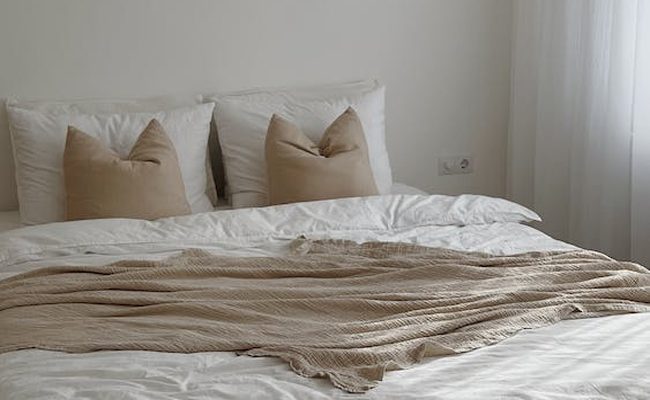
A good night’s sleep is essential for our overall well-being, and the choices we make in our bedrooms can significantly impact the quality of our rest.
One often overlooked aspect of creating a healthy sleep environment is the bedding we use. Non-toxic bedding can play a crucial role in promoting a healthier and more rejuvenating sleep experience.
In this guide, we will explore the importance of non-toxic bedding and provide tips for creating a healthier sleep environment in your home.
Understanding Non-Toxic Bedding
Non-toxic bedding refers to materials and products that are made without harmful chemicals or substances that can negatively affect your health.
Many traditional bedding materials, such as synthetic fabrics and conventional mattresses, can off-gas toxic compounds that may contribute to health issues like allergies, respiratory problems, and skin sensitivities.
To make healthier sleep choices, consider the following non-toxic bedding options:
Organic Cotton
Opt for bedding made from organic cotton, which is grown without the use of synthetic pesticides and fertilizers.
Organic cotton sheets and pillowcases are soft, breathable, and gentle on your skin, reducing the risk of irritation and allergies.
Natural Latex Mattresses
Choose a natural latex mattress, which is made from rubber tree sap without synthetic additives. Natural latex mattresses are known for their comfort, support, and durability.
They are also resistant to dust mites and other allergens. For a more in-depth guide, read Non-Toxic Bedding: How to Choose Healthy Bedding for your Home.
Wool Bedding
Wool is a natural, flame-resistant material that is also resistant to dust mites and other allergens.
Wool bedding, such as comforters and mattress toppers, can help regulate your body temperature and promote a more restful sleep.
Tencel or Lyocell
Tencel or Lyocell sheets are made from sustainably sourced eucalyptus wood pulp and are known for their softness and moisture-wicking properties.
These sheets are an excellent choice for those who tend to sleep hot.
Creating a Healthier Sleep Environment
In addition to choosing non-toxic bedding, there are other steps you can take to create a healthier sleep environment in your home:
Reduce Indoor Air Pollution
Improve indoor air quality by using an air purifier, ensuring proper ventilation, and minimizing the use of synthetic fragrances and air fresheners in your bedroom. Cleaner air promotes better sleep and overall well-being.
Choose Low-VOC Paints
If you’re redecorating your bedroom, opt for low- VOC (volatile organic compounds) paints to reduce the release of harmful chemicals into the air.
Declutter Your Bedroom
A clutter-free bedroom can help reduce stress and anxiety, promoting a more peaceful and restful sleep environment.
Invest in Blackout Curtains
Blocking out external light with blackout curtains can help regulate your circadian rhythm, making it easier to fall asleep and stay asleep.
Maintain a Comfortable Temperature
Keep your bedroom at a comfortable temperature for sleeping. The ideal room temperature for most people is between 60 and 67 degrees Fahrenheit (15-19 degrees Celsius).
Choose the Right Mattress and Pillow
Select a mattress and pillow that provide proper support for your body and sleeping position. A well-suited mattress and pillow can significantly impact the quality of your sleep.
Avoid Screen Time Before Bed
The blue light emitted by screens can disrupt your circadian rhythm. Avoid screens for at least an hour before bedtime to improve sleep quality.
Practice a Bedtime Routine
Establish a bedtime routine that helps signal your body it’s time to sleep. Activities like reading a book, taking a warm bath, or practicing relaxation techniques can be effective.
Use Non-Toxic Cleaning Products
When cleaning your bedroom, opt for non-toxic, eco-friendly cleaning products to minimize exposure to harmful chemicals.
By making these healthier sleep choices, you can create a sleep environment that supports better rest and overall well-being.
Leave a Reply